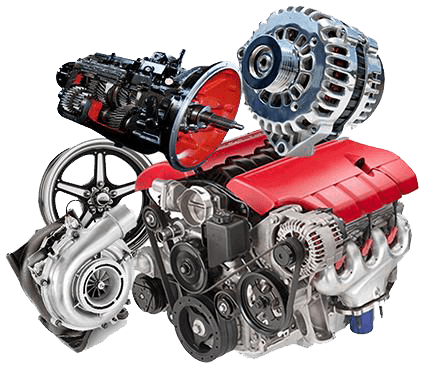Opel Corsa Engine: Common Issues and Just How to Deal with Them
Opel Corsa Engine: Common Issues and Just How to Deal with Them
Blog Article
Comprehensive Testimonial of a Subcompact Car's Powertrain Capabilities
In the world of automotive design, the powertrain of a subcompact auto stands as an essential nexus where performance, performance, and advancement converge. When scrutinizing the elaborate web of elements that propel these vehicles ahead, one uncovers a harmony of design marvels waiting to be explored. From the engine's relentless pursuit of optimal efficiency to the transmission's smooth choreography of power distribution, every component plays an essential function in defining the general driving experience. Beyond the surface area exists a chest of insights waiting to be discovered, promising a much deeper understanding of exactly how these powertrains really get on in the realm of sensible application.
Engine Performance Evaluation
In analyzing the engine performance of the subcompact car, a comprehensive analysis exposes its performance and power result under numerous driving conditions. The subcompact car's engine, an essential part of its powertrain system, shows extensive efficiency metrics. The engine's performance is notable, as it maximizes gas usage without endangering power delivery. Under normal driving problems, the engine runs efficiently, showcasing a balance in between performance and fuel economy.
Additionally, when based on extensive testing circumstances such as high-speed acceleration or uphill climbs up, the engine demonstrates resilience and responsiveness. Its power result remains constant, offering appropriate velocity when required. The subcompact vehicle's engine is tailored to meet the needs of urban driving, where fast velocity and nimble ability to move are crucial.
Additionally, the engine's style includes modern technologies that improve its efficiency features. Functions like turbocharging or variable shutoff timing add to enhanced power delivery and torque, improving the total driving experience. To conclude, the engine performance of the subcompact auto emphasizes its ability to deliver reputable and reliable power result across different driving conditions.
Transmission Efficiency Evaluation
Assessing the subcompact vehicle's transmission performance includes analyzing its efficiency in transferring power flawlessly across numerous driving problems. The effectiveness of a transmission system is critical as it straight affects the overall performance and fuel economy of the automobile.
One typical method made use of to evaluate transmission effectiveness is with dynamometer screening, where the power output from the engine is determined at the input and output shafts of the transmission. Disparities in between input and result power can indicate the degree of effectiveness of the transmission system. Additionally, real-world driving tests are carried out to examine how the transmission carries out in useful situations. By analyzing these elements, designers can determine areas for renovation and optimize the transmission system for better overall performance and efficiency.
Gas Effectiveness Evaluation
The evaluation of the subcompact automobile's gas performance includes a detailed evaluation of its consumption rates under various driving problems. Gas efficiency is a vital consider examining the overall performance and cost-effectiveness of a car. By gauging the quantity of fuel consumed each distance took a trip, normally shared as miles per gallon (MPG) or liters per 100 kilometers (L/100 kilometres), the efficiency of the subcompact automobile's powertrain can be determined.

In addition, improvements in technology, such as crossbreed systems, regenerative stopping, and automated start-stop systems, have substantially enhanced gas performance in contemporary subcompact cars and trucks. Makers remain to enhance and introduce powertrain elements to enhance gas performance while meeting performance demands and environmental policies. Assessing a subcompact automobile's gas effectiveness provides useful understandings for consumers seeking economical and lasting transport remedies.
Velocity and Handling Evaluation
An indispensable facet of reviewing the performance capacities of a subcompact automobile depends on analyzing its velocity and handling features. Velocity is vital as it establishes how quickly the vehicle can get to preferred rates, impacting overall driving experience and maneuverability in numerous website traffic problems. opel corsa engine. Subcompact cars are commonly preferred for their nimbleness and agility, making velocity from standstill and throughout overtaking maneuvers crucial aspects to consider
When it comes to managing, a subcompact car's capacity to navigate corners, preserve stability at broadband, and give a responsive guiding feel are paramount. Tight city streets read review and winding roads require accurate dealing with to make sure motorist confidence and safety and security. Aspects such as suspension adjusting, weight circulation, and tire grip play significant roles in determining a subcompact car's total handling prowess.

Powertrain Elements Introduction
Upon diving into the complexities of a subcompact vehicle's efficiency, a comprehensive assessment of its powertrain components is necessary to understand the car's mechanical supports. The powertrain of a subcompact car commonly consists of the engine, transmission, driveshaft, differential, and axles. Comprehending how these components function together is vital in analyzing a subcompact car's total performance, performance, and driving dynamics.
Verdict
In verdict, the subcompact automobile's powertrain capabilities have been extensively evaluated in regards to engine performance, transmission effectiveness, fuel performance, handling, and velocity. The detailed review highlights the significance of each part interacting flawlessly to supply ideal efficiency. On the whole, the powertrain elements of the subcompact cars and truck have actually been located to be healthy and reliable, making it a reliable option for vehicle drivers seeking a portable and fuel-efficient car.
In the realm of vehicle engineering, the powertrain of a subcompact automobile stands as an essential nexus where efficiency, performance, and innovation merge.In assessing the engine performance of the subcompact vehicle, an extensive analysis exposes its effectiveness and power outcome under different driving conditions.Evaluating the subcompact automobile's transmission effectiveness includes examining its performance in transferring power perfectly across various driving conditions. Understanding just how these parts function with each other is vital in examining a subcompact automobile's general performance, efficiency, and driving characteristics.In verdict, the subcompact vehicle's powertrain capacities top article have actually been completely analyzed in terms of engine efficiency, transmission effectiveness, fuel efficiency, velocity, and handling.
Report this page